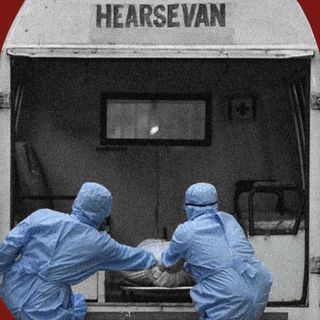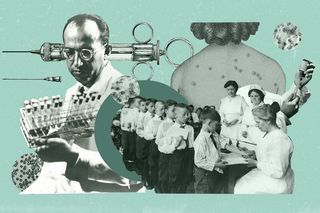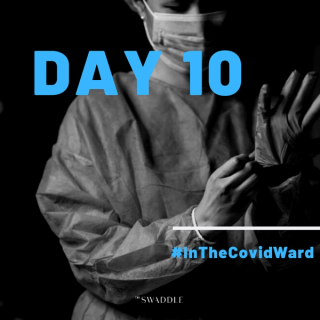
Waiting for a Vaccine Cannot Be Our Pandemic Response Strategy
History tells us pandemics are long. Governments should be focused on how we adapt to existing in a world with Covid19.

In 17th century China, in a precursor to modern vaccines, Buddhist monks smeared cowpox on themselves to gain immunity to smallpox. Around two hundred years later, Edward Jenner, the father of vaccinology, developed the first smallpox vaccine. From there, it took another two centuries for the disease to be eradicated.
Vaccinology is a painstaking and challenging aspect of disease eradication. It takes years to study, develop, and test a vaccine, and much longer to actually eradicate a disease. For several deadly diseases, including AIDS, we do not yet have a vaccine, but manage them with effective therapeutics, public messaging, and prevention.
With Covid19, the focus of governments and public health policy-makers should be to manage what is likely to be a very long pandemic, rather than base policy on the promise of a vaccine.
The vaccine is currently theoretical
There are currently several promising candidates for a novel coronavirus vaccine. This is the fastest that vaccine candidates have ever made it to clinical trials. One of the top contenders is a completely new class of vaccines — the mRNA vaccine. RNA-based vaccines are faster and cheaper to produce than traditional vaccines; they are also safer for patients. However, despite having been studied for nearly twenty years, there is still not a single commercial example of an RNA-based vaccine.
Although the human immune system is a remarkable feat of biochemical engineering, viruses are especially difficult to tackle because they have evolved to disguise themselves within our body. We have much to learn about the still-new coronavirus — how it affects the body, and how our immune system responds to it. We are yet to fully understand how this may complicate the process of finding an effective vaccine.
With several candidates going into human trials in the coming months, it is important to remember that the process of trialling a vaccine is frequently not linear. As they are being tested for safety and efficacy, vaccine candidates that initially seemed promising will drop out, and others will have to be reworked — in short, getting to the finish line will not be straightforward. It is worth bearing in mind that, even with advanced molecular biology, vaccine development usually takes 10–15 years, and the typical rate of success is only 6%.
Even assuming a best case scenario at each turn, we are still looking at at least another year before there is a viable vaccine candidate. In the meantime, however, the medical and scientific community will continue to study therapeutics that can help treat patients with Covid, and perhaps even reduce mortality rates.
Disease eradication takes time
To understand how time-intensive fully eradicating a disease is, we can look back to the recent history of polio. In the 1950s, Jonas Salk created the polio vaccine. Polio had been an endemic disease for millennia before it slowly began to cause outbreaks at the beginning of the 20th century. It hit its peak in the 1940s and 1950s, paralyzing or killing over half a million people worldwide every year. As nobody knew how the disease was transmitted, there was large-scale closure of schools, movie theatres, and other public areas of gathering.
The Salk vaccine took six years to pass clinical trials and data validation. Although by the end of the century, polio became a thing of the past in the developed world, it still continues to be a threat in India and many African countries. Polio is a great case study of how even with modern vaccines and medicine, it often takes decades for a disease to be eradicated — and perhaps not fully even then.
There are impediments to herd immunity
We know from preliminary studies that SARS-CoV-2 produces strong immune responses, which is encouraging because it means that this can be replicated in the body with a vaccine.But vaccine development is just one part of the challenge, the other massive aspect is manufacturing and administering it to eight billion people. Scientists are aiming for certain features in order to take the pressure off of manufacturing, such as a vaccine that is effective with a single dose. But this is currently uncertain.
Researchers have never worked at this speed before to deliver an effective vaccine. While this is positive overall, it may also present its own challenges. The situation is putting pressure on the scientific and pharma communities in unforeseen ways; already, we have seen some of the usual checks and balances failing. Vaccine development, trial, manufacture, distribution, and community acceptance are processes that have usually played out over decades — we are trying to compress all of it into the span of a year, and it is near impossible predict what roadblocks we may encounter along the way.
Furthermore, vaccination is only effective when 70–90% of people within the population are immunized, thereby conferring “herd-immunity” against a particular disease. A recent poll shows that only 49% of Americans would be willing to get vaccinated against coronavirus if there was one available. A lack of global consensus — due to the absence of effective political leadership, the fragmentation of the pharmaceutical landscape, and drastic shifts in people’s ideology — might exacerbate this health crisis.
There is a better approach
The global threat of disease has never been higher than it is today, in spite of scientific advances. Not only are we creating conditions where diseases can thrive, our existing conditions enable disease to spread globally at a very rapid pace. Even when effective vaccines are available in adequate doses, eradication of disease is an arduous task that requires tremendous inter-governmental effort, leadership, and cooperation.
In the intervening time, this pandemic presents an opportunity to build robust healthcare systems, response plans, socio-capital political systems, and focus on environmental protection to reduce the threat of future outbreaks. As a civilization, we perform best when under immediate threat and pressure. In the half-century it took to curb the polio epidemic, significant medical inventions came out of living with the disease, for example, the positive-pressure ventilator — the precursor to modern-day ventilators. On the road to learning to live with Covid19, we may make several such advances that have nothing to do with vaccinology, but will go on to create history and push the boundaries of science. It is too early to talk about the complete eradication of the novel coronavirus. However, effective pandemic management is well within our reach.
Akhila Vijayaraghavan is a hydroponic farmer, powerlifter, diver, and writer. Trained as a molecular biologist at the University of Glasgow, she has worked in environmental strategy, advising companies on ESG and waste management. Now she runs an urban hydroponic farm focused on agritech innovations. Follow her on Twitter: @aksvi or Instagram: @thebokehchaser.
Related


Doctor Diary, Day 10: “Please, Cut Us Some Slack Sometimes. We Are Not God.
